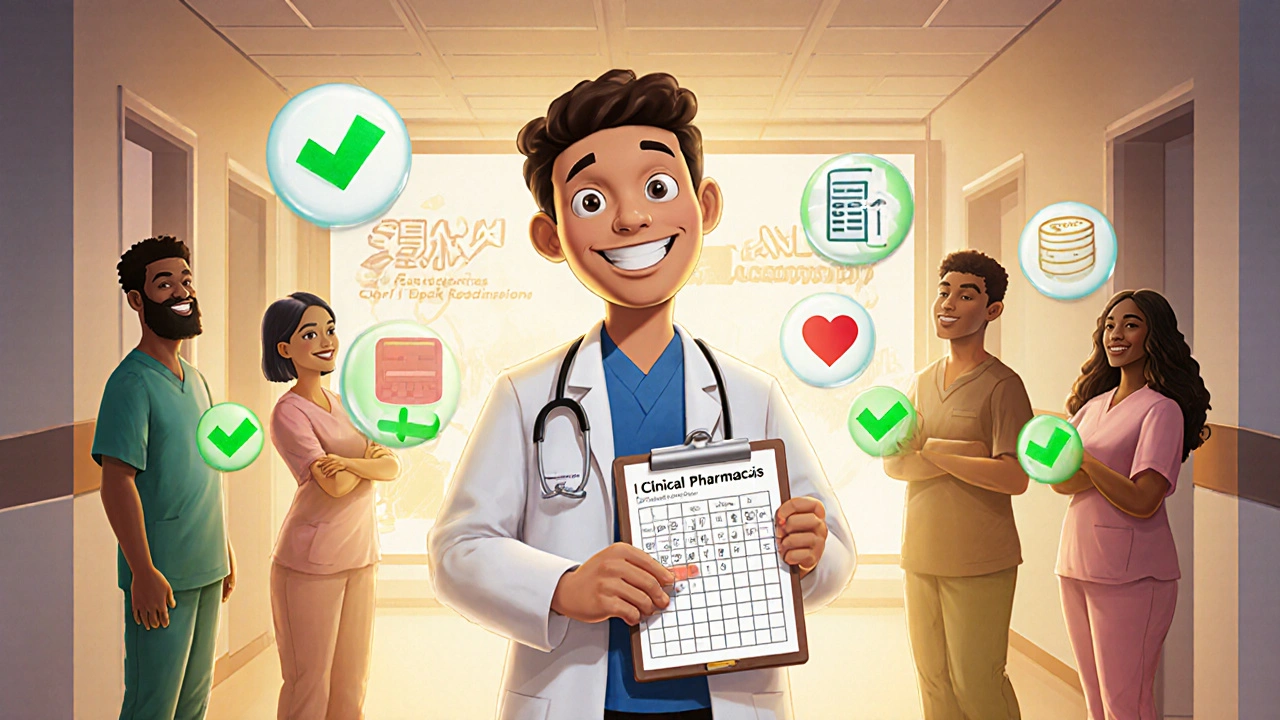
Generic Drug Savings Calculator
Save Money on Prescriptions
Switching to generic drugs can save up to 85% on your medication costs while maintaining the same safety and effectiveness. This calculator shows your potential savings with guidance from pharmacists.
Estimated Savings
Important Safety Note: For most medications, generics are equally safe and effective. However, for drugs with a narrow therapeutic index (like warfarin or thyroid medications), close monitoring by your pharmacist is essential. Always consult your pharmacist before switching medications.
Medication costs are rising fast. In 2025, the average Australian household spends over $1,200 a year on prescriptions - and that’s before hospital bills from avoidable errors. What if you could cut those costs by 20% without putting patients at risk? It’s not a fantasy. Hospitals, clinics, and even individual patients are already doing it - safely.
Pharmacists Are the Secret Weapon
Most people think of pharmacists as the people who hand out pills. But the real power lies in what they do before that pill leaves the counter. Clinical pharmacists who review every patient’s full medication list - not just the new script - catch problems others miss. One study in a 390-bed community hospital found that daily pharmacist reviews for heart failure patients cut 30-day readmissions by nearly half. That saved about $5,652 per patient. That’s not a guess. That’s real money saved because someone looked closely at what the patient was actually taking.
These aren’t just busywork reviews. They’re targeted. Pharmacists spot duplicate prescriptions, dangerous interactions, or drugs that are no longer needed. One patient might be on five blood pressure meds because different doctors prescribed them over time. A pharmacist can trim that to two, safely. The result? Lower costs, fewer side effects, and fewer trips back to the ER.
And the return on investment? It’s staggering. A study from Walter Reed Army Medical Center showed every dollar spent on pharmacist-led care returned $6.03 in savings. That’s better than most tech investments. And it’s not just hospitals. Community pharmacies doing medication therapy management (MTM) programs report similar results.
Generic Drugs Are Safe - and Smart
Generic drugs aren’t cheap knockoffs. They’re the exact same active ingredients as brand-name drugs, approved by the same agencies, tested for the same standards. In fact, 82.2% of patients who save money on meds use generics. And here’s the kicker: studies show no difference in effectiveness or safety between generics and brand names for 95% of medications.
Some people worry about bioequivalence - especially with drugs that have a narrow therapeutic index, like warfarin or thyroid meds. That’s valid. But the solution isn’t avoiding generics. It’s monitoring. A pharmacist can check blood levels after switching, adjust doses if needed, and make sure the patient feels the same. Done right, switching to generics can cut a monthly script from $150 to $15 - without a single adverse event.
And it’s not just about price. Generic drugs reduce waste. Fewer unused pills sitting in medicine cabinets mean less environmental impact and less risk of accidental overdose.
Standardized Communication Saves Lives (and Money)
Most medication errors don’t happen because someone was careless. They happen because information got lost in translation. A doctor says “give 5 mg.” The nurse hears “50 mg.” The patient ends up in ICU.
One simple fix: SBAR. It stands for Situation, Background, Assessment, Recommendation. It’s a structured way for nurses, doctors, and pharmacists to talk. At one large hospital system, using SBAR cut adverse drug events by 50%. No new software. No expensive training. Just a clearer way to speak.
It’s not magic. It’s structure. When handoffs happen - from ER to ward, from hospital to home - SBAR ensures nothing slips through. And when you prevent one serious error, you save thousands in extended stays, lab tests, and legal costs. That’s why Magnet-recognized hospitals, which have the best safety records, make SBAR part of their daily rhythm.
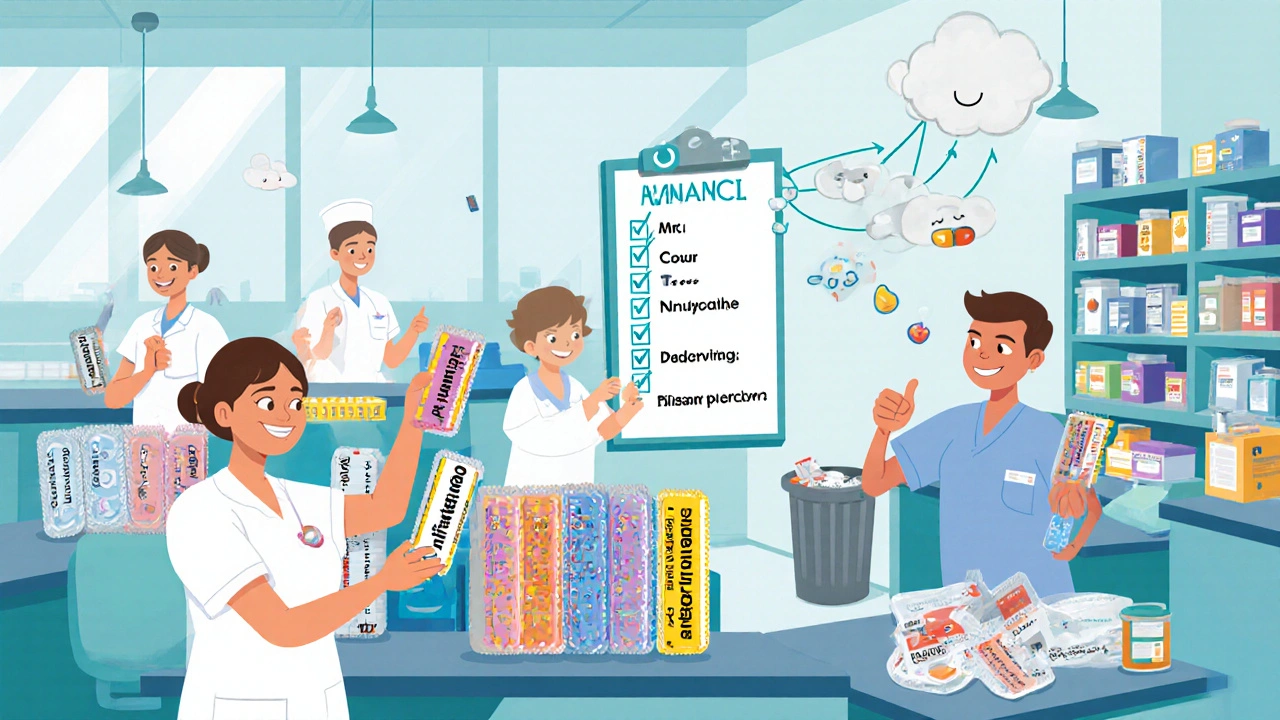
Ready-to-Administer (RTA) Packs: Less Waste, Fewer Errors
Imagine preparing 30 different pills for a single patient every morning. Now imagine doing that for 50 patients. It’s time-consuming. And error-prone. One wrong pill, one missed dose - and someone gets hurt.
RTA packs are pre-sorted, unit-dose packages prepared by pharmacy technicians. Each patient’s meds for the day are in one blister pack. No counting. No mixing. No confusion.
Yes, RTA packs cost 15-20% more to produce. But they save more than that. They cut preparation time by 30%. They reduce administration errors by up to 40%. And they cut pharmaceutical waste - pills that get thrown out because they weren’t taken - by as much as 25%.
One hospital in Queensland switched to RTA packs for their elderly care unit. Within six months, medication-related incidents dropped by 42%. Staff morale improved. Nurses had more time to talk to patients. And the pharmacy budget? It didn’t go up - it went down, because they stopped wasting so many pills.
Patients Can Help Too
Patients aren’t just recipients of care - they’re part of the solution. Thirty-seven and a half percent use mail-order pharmacies to save on long-term meds. Nearly 30% get free samples from their doctor. Almost 40% use at least one cost-saving trick.
But they need guidance. A patient might switch to a cheaper drug without telling their doctor. That’s risky. A pharmacist can help them pick a safe, affordable option - and make sure it fits their whole regimen.
Simple tools help. A printed medication list. A pill organizer. A phone reminder. These aren’t fancy tech. But they work. One study found patients who used a simple pill tracker were 25% more likely to take their meds correctly - and 30% less likely to be readmitted.
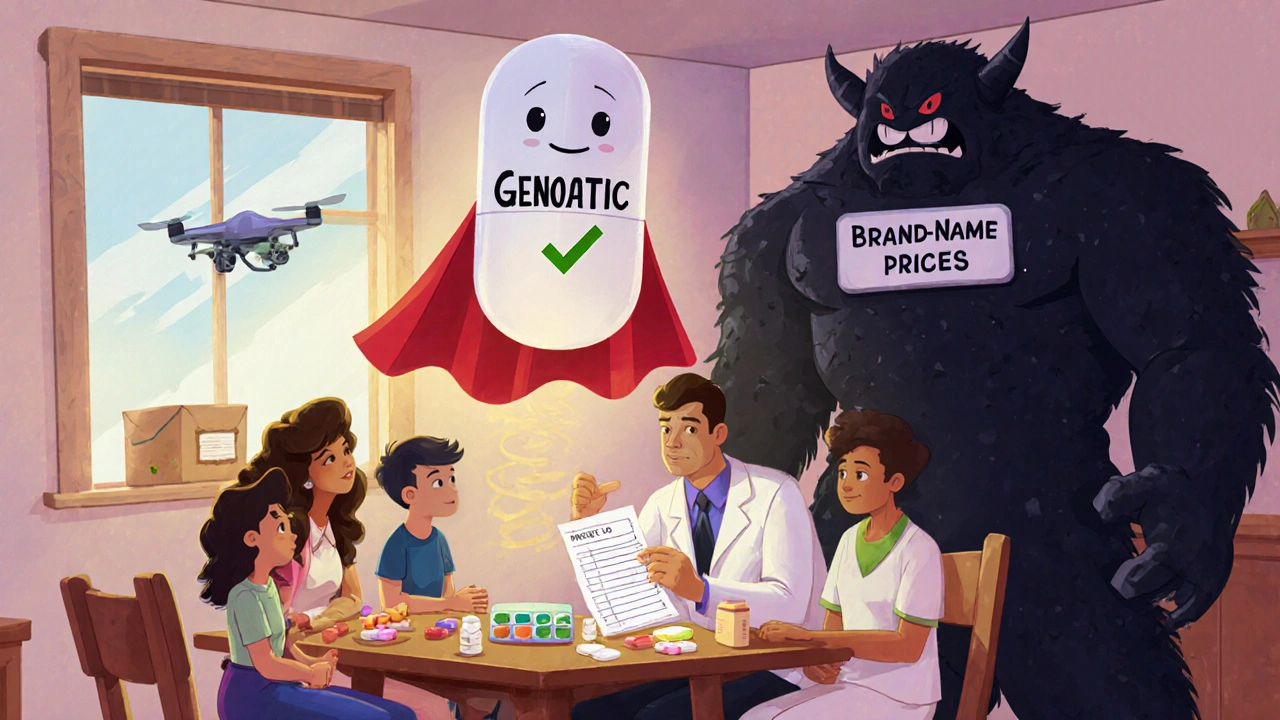
What Doesn’t Work: Cutting Corners
Not all cost-saving ideas are safe. Reducing pharmacy staff to save money? That’s a recipe for disaster. One hospital director on LinkedIn admitted cutting tech positions led to a 22% spike in medication errors - and $1.2 million in extra costs from lawsuits and longer stays.
Same with skipping medication reconciliation. The Joint Commission requires it. Why? Because when patients move between units or hospitals, their meds often get lost. One study found 70% of patients had at least one error during transition. That’s not a glitch. That’s systemic.
And not all tech fixes everything. Electronic prescribing cuts errors by 55%. But it won’t catch a drug that’s still being taken even though the patient’s kidney function has dropped. Only a pharmacist can see that.
The Bottom Line: Safety and Savings Go Together
You can’t save money by ignoring safety. But you can save money by doubling down on it.
The best strategies combine people, process, and smart tech:
- Pharmacists on the team - not just behind the counter, but in rounds, in discharge planning, in follow-ups.
- Generics as the default - unless there’s a clinical reason not to.
- SBAR for handoffs - every time.
- RTA packs - especially for high-risk patients.
- Patient education - simple, clear, repeated.
Hospitals doing this right are seeing 15-20% lower pharmaceutical costs per admission. They’re also seeing fewer readmissions, higher patient satisfaction, and lower staff burnout.
It’s not about spending less. It’s about spending smarter.
Are generic drugs really as safe as brand-name drugs?
Yes. Generic drugs must meet the same strict standards as brand-name drugs for active ingredients, strength, dosage form, and how they’re absorbed by the body. The FDA and TGA (Therapeutic Goods Administration) require bioequivalence testing. For 95% of medications, there’s no difference in safety or effectiveness. The only exceptions are a few narrow therapeutic index drugs like warfarin or levothyroxine, where close monitoring after switching is recommended - but even then, generics are safe when managed properly by a pharmacist.
Can I save money by skipping my medication if I can’t afford it?
No. Skipping meds can lead to worse health, hospitalization, or even death - which costs far more in the long run. Instead, talk to your pharmacist or doctor. Ask about generic alternatives, patient assistance programs, or mail-order pharmacies. Many drugmakers offer free samples or discount cards. Pharmacies like Chemist Warehouse or TerryWhite Chemmart often have low-cost generic programs. Never stop a medication without professional advice.
Why do some hospitals still avoid hiring more pharmacists?
It’s often a short-term budget view. Pharmacists cost salaries and benefits - but they save far more by preventing errors, reducing readmissions, and cutting waste. Hospitals that don’t see this are missing the data. Studies show pharmacist-led programs pay for themselves in under six months. The real barrier isn’t cost - it’s awareness. Many administrators still think pharmacists only count pills, not that they prevent millions in avoidable costs.
Do barcode scanning systems really reduce errors?
Yes - but only for administration errors. Barcode systems prevent giving the wrong drug or wrong dose to the wrong patient by matching the patient’s wristband to the medication. They cut administration errors by 41%. But they don’t catch wrong prescriptions, unnecessary meds, or drug interactions. That’s why they work best with pharmacists reviewing the full picture. Technology helps - but people make the final call.
What’s the biggest mistake people make when trying to cut medication costs?
Assuming that cheaper = unsafe. The opposite is often true. The biggest risk isn’t using generics or mail-order pharmacies - it’s not talking to a pharmacist about your options. People cut costs by skipping doses, splitting pills without approval, or switching drugs on their own. These actions increase the chance of hospitalization, which costs 10 times more than the original script. Smart saving means using the right tools with professional guidance - not avoiding care.

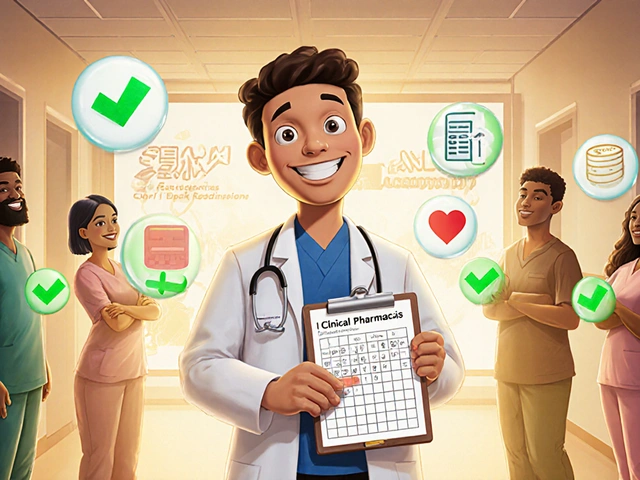
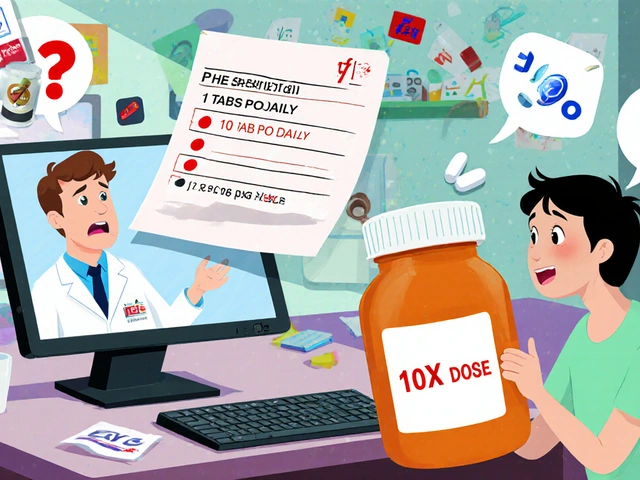
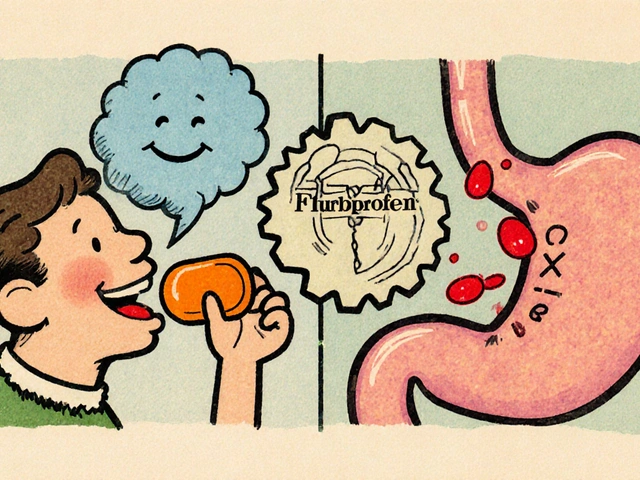
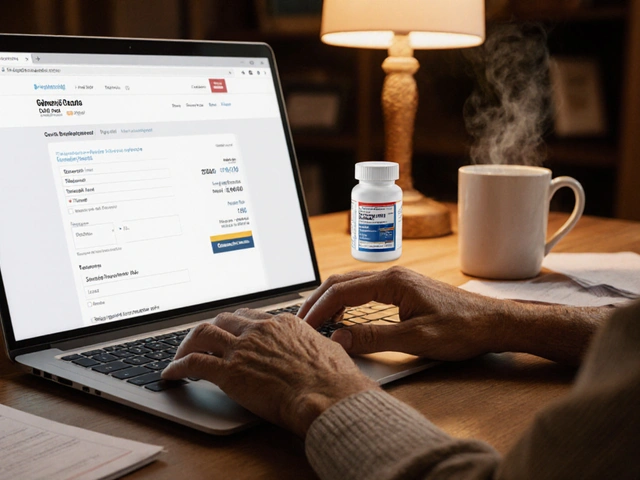
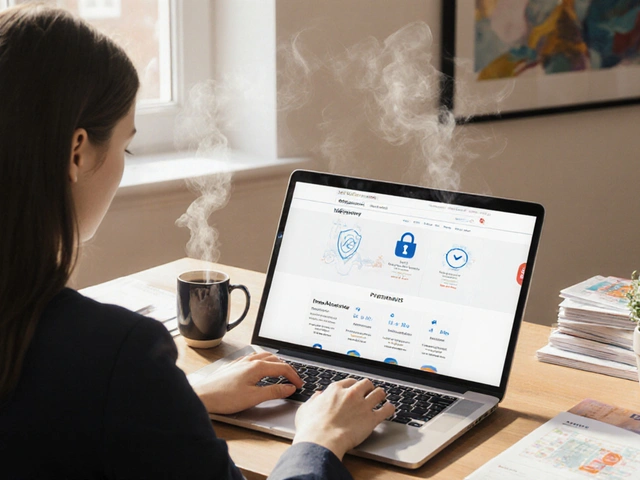
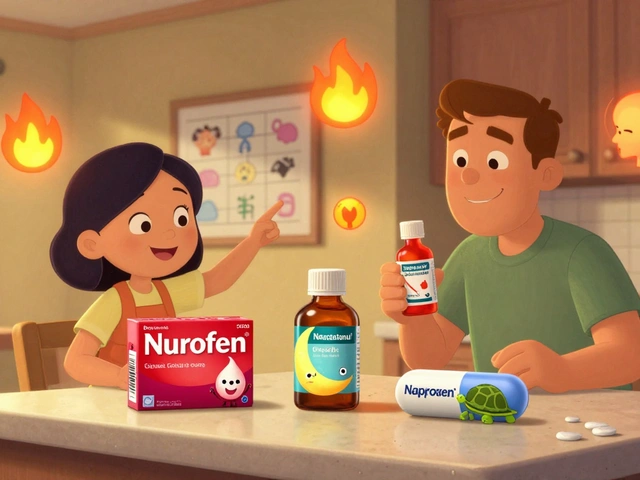
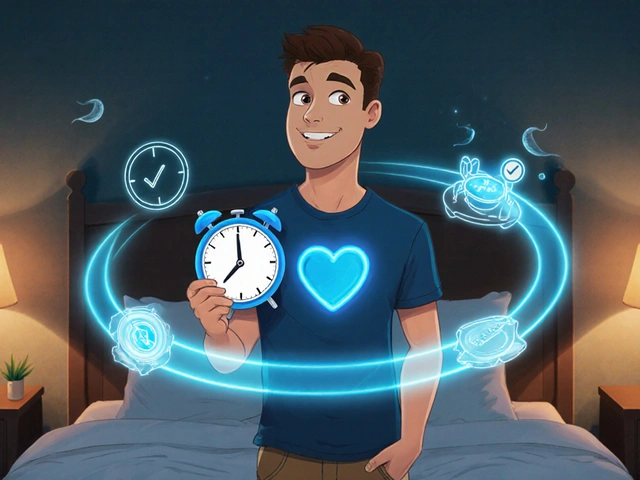

I’ve seen this work firsthand-my mom switched to generics for her blood pressure meds, and her pharmacist caught a dangerous interaction with a supplement she was taking. She’s been stable for two years now, and her monthly bill dropped from $180 to $12. It’s not magic, just good care.
Pharmacists deserve way more respect than they get.
Generics are fine. But why do we still pay $150 for insulin?
OMG this is THE MOST IMPORTANT POST I’VE READ THIS YEAR. Pharmacists are unsung superheroes. RTA packs? SBAR? I’m crying. This is what healthcare should look like-NOT corporate greed. Someone get this on CNN. NOW.
Also, why isn’t every hospital using this? Are they blind?!
Thank you for this exceptionally well-researched and thoughtfully articulated piece. The data presented here is not merely compelling-it is transformative. The return on investment for clinical pharmacy services is not only quantifiable but profoundly ethical. Institutions that fail to integrate pharmacists into care teams are not merely underperforming-they are compromising patient safety and fiscal responsibility.
I urge all healthcare administrators to review the Walter Reed study and the Queensland RTA pilot. The evidence is unequivocal. This is not an expense. It is an imperative.
Yeah but like… why are we even talking about this? Everyone knows generics are fine. And SBAR? That’s just buzzword bingo. The real problem is Big Pharma. Stop blaming nurses and pharmacists. Fix the prices.
Also, I once split a pill and lived. So.
THIS. SO MUCH THIS. I just started using a pill organizer after my aunt had a bad reaction from mixing meds. I didn’t even know I was taking two of the same thing! My pharmacist was so nice and made me a printed list. Now I feel like I’m actually in control.
Also, RTA packs? YES. My grandma’s nursing home uses them and she’s been so much calmer. Staff have time to actually talk to us now. It’s not fancy, but it’s human.
thank you for sharing this!! 🙏
Interesting point about barcode systems only catching administration errors. That’s a crucial distinction. I wonder how many hospitals conflate tech adoption with safety improvement. The real value here is the human layer-the pharmacist who notices a patient’s creatinine has doubled and pulls a drug before it causes harm.
Technology enables, but people decide. That’s the takeaway I’d emphasize to leadership.
People who think generics are unsafe are putting their own ignorance above science. If you’re too lazy to talk to a pharmacist, don’t blame the system. You’re the reason we have ER visits from people who skipped their meds to save $10. You’re not saving money-you’re costing everyone else. Get informed or get out of the way.